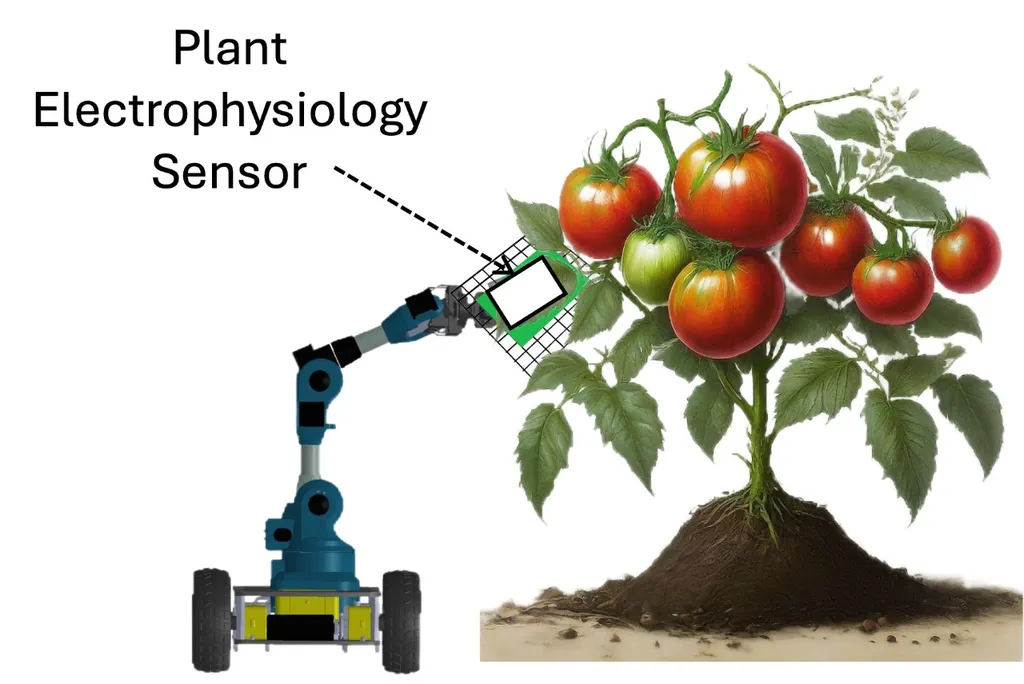In the heart of British Columbia, researchers at Simon Fraser University are pioneering a technology that could revolutionize the way we monitor crop health and manage water usage in agriculture. Yiting Chen, a lead author from the School of Mechatronic Systems Engineering, has introduced an artificial intelligence-driven robotic system that uses a 3D-printed electrophysiological (EP) sensor to monitor plant health in real-time, offering a promising solution for smart agriculture and sustainability.
The system, detailed in a recent study published in *Advanced Intelligent Systems* (which translates to *Advanced Intelligent Systems* in English), combines a mobile robot equipped with a 3D EP sensor and a portable Faraday cage for data acquisition. This innovative setup uses an AI-powered convolutional neural network to analyze EP data in greenhouses, categorizing irrigation levels to optimize water usage. The implications for the energy sector are substantial, as efficient water management directly impacts energy consumption in agriculture.
Chen’s research highlights the superior performance of the 3D EP sensor, which displays lower and more stable contact resistance compared to traditional flat thin-film sensors. “The 3D EP sensor’s high sensitivity allows us to detect subtle EP signal changes linked to irrigation levels,” Chen explains. “This not only aids in water optimization but also enhances crop yield, making it a reliable tool for long-term monitoring in smart farming.”
The study marks the first time scalogram images have been used for detailed analysis of plant EP signals, achieving a classification accuracy of 86.91%. This accuracy is comparable to methods using red, green, and blue image-based analysis, underscoring the potential of this technology.
The commercial impacts of this research are far-reaching. By optimizing water usage, farmers can reduce energy costs associated with irrigation, contributing to more sustainable and efficient agricultural practices. “This system provides insights into plant signal dynamics, which can be crucial for developing precision agriculture techniques,” Chen adds.
As the world grapples with the challenges of climate change and resource management, technologies like Chen’s AI-driven robotic sensing system offer a beacon of hope. By integrating advanced sensors and machine learning, this research paves the way for a future where agriculture is not only more productive but also more sustainable. The findings from this study could shape the future of smart farming, influencing how we approach crop health monitoring and water management in the years to come.

